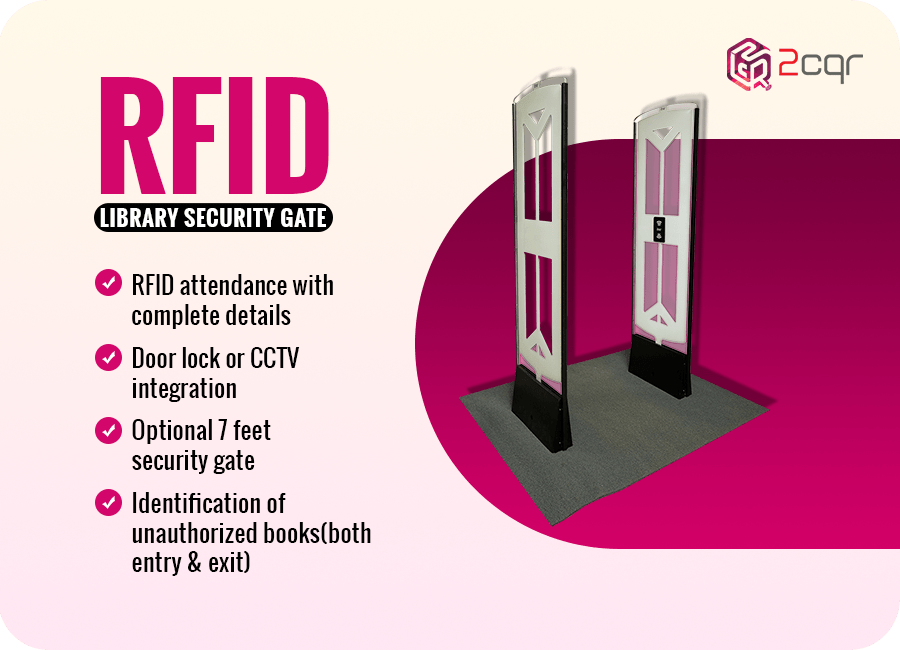
In the ever-evolving landscape of library management, RFID technology stands as a transformative force, reshaping how libraries operate in response to the dynamic interests of the younger generation and the advancements in technology.At the heart of this technological revolution lie RFID tags, silent yet powerful contributors to the modernisation of library systems. These unassuming tags play a pivotal role in streamlining processes, enhancing security, and providing a more seamless experience for library users.
In this exploration, we will delve into a step-by-step process that demonstrates the functioning of RFID tags within the library ecosystem.
Programming Information
In the dynamic landscape of library management, RFID technology has emerged as a game-changer, reshaping the way resources are tracked and managed. The pivotal starting point in this technological marvel is the programming of information onto RFID tags. Specifically tailored for resources such as books, CDs, and DVDs, this data programming forms the cornerstone of the entire RFID system.
This step involves encoding essential details about each item onto the tags, creating a unique digital signature for efficient identification. The programmed information serves as the bedrock, allowing libraries to seamlessly integrate RFID technology into their systems, facilitating streamlined check-ins, check-outs, and inventory management.
With this foundational programming, RFID tags become the silent architects of a more efficient and modernized library experience.
Tuning to RFID Readers
Following the meticulous programming of data onto RFID tags in library management, the next crucial phase involves tuning these tags to the precise frequency of RFID readers and the interconnected systems.
This strategic tuning is paramount, enabling RFID Chips to seamlessly respond when brought into proximity with RFID readers. The harmonious interaction between tuned RFID tags and readers is important to a well synchronised performance , where the tags promptly convey their encoded information to the readers.
In essence, the tuning of tags to the frequency of readers is the pivotal bridge that transforms encoded information into actionable data, propelling libraries into an era of enhanced efficiency and streamlined operations.
Testing and Placement
Once RFID tags are affixed to library items, a critical phase in their implementation involves rigorous testing to ensure optimal functionality. This meticulous testing assesses various factors such as orientation, placement, direction, and the distance between the tags and the corresponding readers.
The goal is to fine-tune the system, ensuring the tags to respond effectively in real-world scenarios. This comprehensive testing not only validates the reliability of the RFID technology but also sets the stage for the true role of these tags in the library ecosystem.
By addressing variables like orientation and distance, libraries can guarantee seamless interactions between RFID tags and readers, laying the groundwork for efficient inventory management, smooth check-ins, and swift check-outs.
In essence, this testing phase is the foundation that transforms tags from passive data carriers into active contributors to the streamlined and modernised functioning of libraries.
Activation by RFID Readers
In the intricate dance between RFID readers and tags within library systems, the activation phase is a pivotal moment. As RFID readers emit radio frequency signals, they act as silent tools, identifying nearby RFID tags that align with the predetermined frequency wavelength and authorization settings.
This astute identification sets in motion a sequence of events, prompting the activation of the embedded chip inside the tags, the activated tags are now primed to relay the encoded information they carry, seamlessly responding to the readers’ signals.
This seamless interaction plays a crucial role in the efficiency of library operations, facilitating tasks such as inventory audits, security checks, book issuing and returning processes, card renewals and so on .
Information Transfer
Once activated by RFID readers, these tags swiftly transmit the stored data to the readers through antennas. This seamless transfer is a hallmark of RFID technology, ensuring that the relevant information encoded in the tags is efficiently collected and utilized by the library’s RFID system.
By facilitating this smooth exchange of information, RFID tags contribute to the modernisation of library operations, enhancing accuracy, speed, and overall user experience.
Conclusion:
In the dynamic realm of library management, RFID technology, accompanied by unassuming yet powerful RFID tags, emerges as a transformative force.
This exploration unveiled the step-by-step journey of the tags, from programming crucial information to seamless data transfer. These silent contributors play a pivotal role in streamlining processes, enhancing security, and ensuring a seamless experience for library users.
As libraries embrace RFID technology, the efficiency and modernisation it brings promise a future where the library experience evolves with technological advancements, catering to the ever-changing needs of library enthusiasts.


